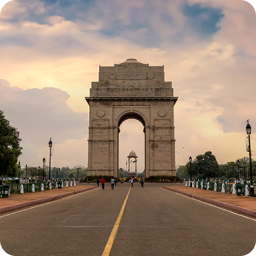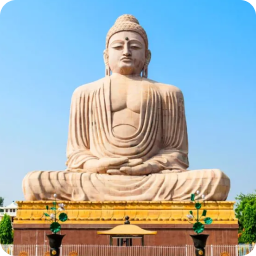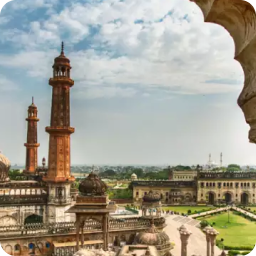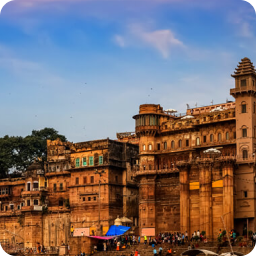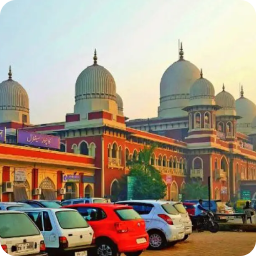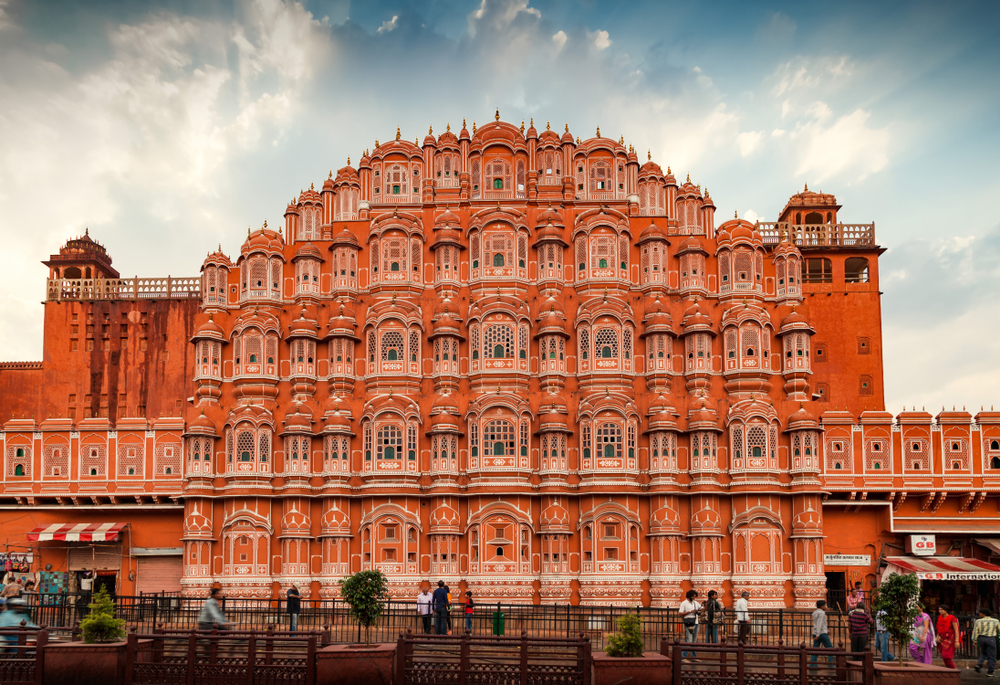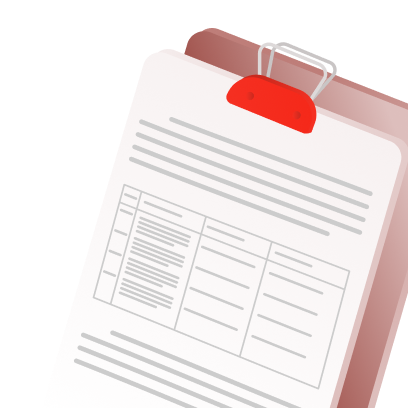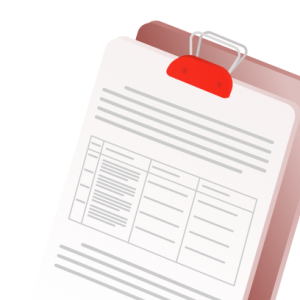President of India |
A Comprehensive Overview on the President of India for Civil Services Aspirants
To excel in competitive exams like the IAS, understanding the President of India is crucial. This topic is significant for the polity and governance segments of the UPSC syllabus. The President, elected for a 5-year term, serves as the head of state and supreme commander of the Armed Forces. While not directly elected by the people, the President appoints civil servants like IAS and IPS officers. It’s essential for IAS aspirants to thoroughly grasp the role and functions of the President.
“We didn’t give him any real power but we’ve made his position one among authority and dignity. The constitution wants to make neither a true executive nor a mere figurehead, but a head that neither reigns nor governs; it wants to make an excellent figurehead…” – Jawaharlal Nehru
INTRODUCTION: Role and Significance of the President of India in the Constitutional Framework
- India follows a Parliamentary type of Government in which the President is the Constitutional head of the state. He is equivalent to the king of England.
- Office of the President came into existence immediately after the constitution was adopted on 26 November 1949
- He is a part of the Union Executive, provisions of which are dealt with Article 52-78, Part V including Art. related to the President (Art. 52-62.)
- The President is the Executive head of India, & all the executive powers of the union shall be vested in him.
- The President is the Supreme Commander of the army forces.
- He is the first citizen of India and acts as the symbol of unity, integrity, and solidarity of the nation.
- He occupies the first position under warrant of precedence.
- Article 52: Implying the President of India is a must in the constitutional scheme and structure of India.
- There is no exception to the rule given by Art. 52. The Office of the President cannot even for a short while remain vacant.
The Union Executive consists of the President, Vice-president, Prime Minister, Union Council of Ministers, and Attorney General of India.
Position of the King under the English Constitution:
- He is the head of the state but not of the executive.
- He represents the nation but does not rule the nation.
- He is the symbol of the nation.
- His place in administration is that of a ceremonial device or a seal by which the nation’s decisions are made known.
Q. Which one of the following amendments to the Indian Constitution empowers the President to send back any matter for reconsideration by the Council of Ministers? [2002]
Answer (d) |
Constitutional Role of the President of India: Powers, Governance and Influence
- The Indian Constitution envisages a parliamentary form of government. Accordingly, the President has been made only a nominal executive
- Article 53: The executive power of the Union shall be vested in the President and shall be exercised by him either directly or through officers subordinate to him following this Constitution.
- Article 74: There shall be a CoM with the PM at the head to aid and advise the President who ‘shall’, in the exercise of his functions, act in accordance with such advice.
- Article 75: The CoM shall be collectively responsible to the Lok Sabha. This provision forms the basis of the PARLIAMENTARY SYSTEM of government.
|
Head of the Nation: Role and Elections (Article 54) of the President of India
- The Constitution states that the President of India is to be elected indirectly by an electoral college under the system of proportional representation by means of a single transferable vote system and secret ballot.
- The Constitution specifies two principles for ensuring uniformity and parity in the value of votes of MPs and MLAs.
MLA Empowerment and Electoral Parity in the Indian Presidential Election System-
- For securing uniformity in the scale of representation of all States, the Constitution provides that the value of vote of an MLA of each state is to be in proportion to the population of that state.
Value of MP Votes in Indian Presidential Elections
- To ensure parity between the States and the Union, it has been laid down that the total value of votes of all the elected Members of Parliament (MPs) shall be equal to the total value of votes of all the MLAs from all states.
Electoral College for President of India: Composition, Significance and the Role of the President
- Elected members of the two Houses of Parliament
- Elected members of the Legislative Assemblies of the States
- Elected members of the Legislative Assembly of National Capital Territory (NCT) of Delhi, the UT of Pondicherry.
| Article 71: Implies that all doubts and disputes related to election of President and Vice President shall be inquired and settled by the Supreme Court whose decision is final. It also states that no such disputes can be raised on the grounds of any vacancy in the electoral college. |
- In the 1st phase, the first preference votes are counted.
- If a candidate meets the necessary quota in this phase, they are declared elected. Otherwise, the vote transfer process is initiated.
- The ballots of the candidate securing the least number of first preference votes are canceled and his 2nd preference votes are transferred to the 1st preference votes of other candidates.
- This process continues till a candidate secures the required quota.
Non-Participants in the Election Process of President of India
- Nominated Members of Lok Sabha (Anglo Indian, 2 members) and Rajya Sabha (12 members)
- Nominated Members of State Legislative Assemblies (Anglo Indian-1)
- Elected and nominated members of Legislative Councils in bicameral legislatures.
- Nominated Members of UTs of Delhi and Puducherry
| States with bicameral legislatures – Andhra Pradesh, Bihar, Karnataka, Maharashtra, Telangana and Uttar Pradesh (J&K became UT in 2019) |
Quota of Votes in President of India Elections
- To be declared elected to the office of president, a candidate must obtain a specified quota of votes.
- The quota of votes can be expressed as follows:
- Every member of the electoral college receives a single ballot paper.
- During casting his vote, the voter is required to indicate his preferences by marking 1, 2, 3, 4, etc. against the names of candidates.
Q. With reference to the election of the President of India, consider the following statements:
Which of the statements given above is/are Correct?
Answer- (a) only 1 |
| AMBIGUITY OVER J&K
The J&K Reorganization Act (2019) does not specify anything about whether the legislature of J&K would be able to vote in the election for a President. A shallow mention is made in Section 13 of the 2019 Act, which implies that J&K Legislature would have the same powers as its Puducherry counterpart. |
Electoral College for President of India: Constitutional Amendments and Challenge of Inclusion of J&K
- Inclusion of new members in the Electoral College in Art. 54 would require a Constitutional Amendment to be carried out through special majority – Two-thirds majority in Parliament and ratification by over 50% of the States.
- This matter involves principles of federalism, hence constitutional amendment is a must.
- UTs of Delhi and Puducherry were included as Electoral College members under 54 through the Seventieth Constitution Amendment Act (1992)
Indirect Elections of the President of India: Rationale, Constitutional Perspectives, and Role in Governance
The manner of elections was first debated in the constituent assembly. There is indirect election because-
- He is only the nominal head.
- Direct election may result in orientation of two rival powers.
- The President is above party politics.
- It saves our time, logistics, resources, energy and money as he has no real power.
- He is not directly responsible to the people.
- To win the election, the Presidential candidate must poll above the 50% cut off as the first preference. It will be difficult to get this in a direct election.
- The framers of the Constitution wanted the power of the government to reside in the CoM and the Legislature, and not in the President.
- B.R. Ambedkar – The President’s place in the administration should be seen as the “ceremonial device on a seal by which the nation’s decisions are made known”.
Preserving Presidential Independence: Inclusion of MLAs and Exclusion of MLCs in the Electoral College
| Inclusion of MLAs | Exclusion of MLCs |
| Excluding the MLA would reduce the president to a creature of the majority party and pale shadow of the PM.
He is the symbol of unity and integrity of the whole nation. He is head and chief of the Indian Union. |
Legislative councils do not exist in all states.
The procedure for their creation and abolishment may be abused to get an unfair advantage in the electoral college. |
Qualifications for the President of India – ART. 58
- He should be an Indian Citizen
- His age should be a minimum of 35 years
- He should qualify the conditions to be elected as a member of the Lok Sabha
- Must be register as an elector in India
- He should not hold any office of profit under the central government, state government, or any public authority.
- The nomination paper of a candidate must be signed by at least 50 eligible voters.
| A sitting President or VICE-PRESIDENT of the Union, the Governor of any state and a minister of the Union or any state isn’t deemed to hold any office of profit and hence qualified as a Presidential candidate. |
Every candidate has to make a security deposit of INR15000 in RBI, liable to be forfeited in case candidate fails to secure 1/6th of the votes polled.
- The nomination of a candidate for election to the office of President should be subscribed by a minimum of 50 electors as proposers and 50 electors as seconders.
Persons who shall not hold any office of profit to become qualified for being a candidate for Presidential election:
|
Oath and Affirmation to Serve India and Uphold the Constitution by the President of India – ART. 60
- In his oath, the President swears:
- to faithfully execute the office;
- to preserve, protect and defend the Constitution and the law;
- to devote himself to the service and well-being of the people of India
- The oath of office to the President is administered by the Chief Justice of India, or in their absence, by the most senior judge of the SUPREME COURT.
Presidential Office Conditions in India: Eligibility, Privileges, and Compensation for the President of India- ART. 59
- He should not be a member of either House of Parliament or a House of the state legislature. If any such person is elected as President, he is deemed to have vacated his seat therein house on the date on which he enters upon his office as President.
- He should not hold any other office of profit.
- He is entitled, without payment of rent, to the use of his official residence (Rastrapathi Bhavan).
- He is entitled to such emoluments, allowances and privileges as may be determined by PARLIAMENT.
- His emoluments and allowances cannot be diminished during his term of office.
Term of President’s Office in India: Duration, Resignation and Re-election – ART. 56
- The President shall hold the office for terms of 5 years from the date he enters upon his office.
- Even after expiry of his terms, he shall continue in office until his successor enters upon his office
- President may resign his office before the expiry of his normal terms of 5 years by writing to the vice president
- He may be elected for any number of terms, unlike in the USA.
- In USA, the President cannot be elected to the office for more than two terms
Impeachment of the President of India: Constitutional Violations and the Parliamentary Process- ART. 61
- Article 61: outlines the process for impeachment of the President.
- Power of impeachment of president lies in Parliament
- The authority to impeach the President rests solely with Parliament only for “violation of the constitution”.
- Impeachment of President is a quasi-judicial procedure in the Parliament.
Q. Which of the following are/is stated in the Constitution of India? [1997]
Choose the correct answer from the codes given below:
Answer: b Q. Which one of the following is a part of the electoral college for the President but, not the forum for his impeachment? [1996]
Answer: d |
The Indian Constitution does not provide a definition for the term ‘violation of the Constitution’.
- Procedure of impeachment:
- During impeachment proceedings, the President has the right to appear & to be represented at such an investigation to defend himself.
- Other than impeachment, no other penalty can be imposed on the president for violation of the constitution
- Impeachment Resolution:
- It can be initiated in any house of the parliament. Resolution initiated must be signed by 1/4th of the candidate of the initiating house with 14 day notice to be given to the president
- Impeachment resolution is passed by a 2/3 majority of the total membership of that House, it is sent to the other House, which should investigate the charges.
- If the other House also sustains the charges and passes the impeachment resolution by a majority of 2/3 of the total membership, then the President stands impeached.
- No President has so far been impeached.
| NOTE: If the election of a person as President is declared void by the SC, acts done by him before the date of such a declaration by the Supreme Court remain valid and in effect. |
Impeachment of the President of India: Legislative Processes and Constitutional Dimensions
- The nominated members of either House of Parliament can participate in the impeachment of the President, though they do not participate in his election;
- The elected members of the legislative assemblies of states and the UTs of Delhi and Puducherry do not participate in the impeachment of the President though they participate in his election.
Challenges and Ambiguities in the Impeachment Process of the President of India
- Term ‘violation of constitution’ is very vague term & has not been defined anywhere in the constitution’
- Elected members of legislative assemblies have no role to play in impeachment proceedings, while they have a role in election of the President
- Nominated members
- Procedure & authority to investigate the charges against the President have not been specified nor any definite time period has been specified.
Legal Safeguards and Immunities: Protective Umbrella for the President of India (Art. 361)
- Article 361 (1): The President is not answerable to any court when in office, but the exception is that either house of the parliament can authorize any tribunal, court or body for the investigation of charge under Art. 61.
- While in office, the President is not subject to jurisdiction of any court; however, Parliament can authorize any tribunal, court, or body to investigate charges under Article 61.
- Article 361 (2): No criminal charges can be initiated or pursued against the President or Governor while they hold office.
- Article 361 (3): No proceedings for the arrest or imprisonment of the President or Governor shall be done by any court while in office.
- Article 361 (4): Civil proceedings against a Governor or President against things done by him in his personal capacity can be done only with a previous 2 months’ notice.
Presidential Succession and Vacancy – ART. 62
- In case of completion of President’s term for five years in office
- In case of resignation to the Vice-president of India
- If the Lok Sabha or Rajya Sabha initiates an impeachment charge and it is upheld, the President will be removed from office.
- In the event that he dies in the office
- Invalidation of election by Supreme Court
| CONDITIONALITIES | |
| 1. | Vacancy by the expiration of the term of the sitting President – election to fill the vacancy must be held before the expiration of the term (NOTE– In this condition, Vice-President does not get the opportunity to act as President or to discharge the functions of the President. ) |
| 2 | Vacancy by resignation, removal, death or otherwise – election to fill the vacancy should be held within six months from the date of the occurrence of such a vacancy. (NOTE: Newly-elected President remains in office for a full term of five years) |
| NOTE: In case of vacancy by resignation, removal, death or otherwise, the Vice-President acts as the President until a new President is elected. | |
| Prevention of an ‘interregnum’ – In case of delay in conducting the election of a new President, the outgoing President continues to hold office (beyond five years) until his successor assumes charge. | |
- In case the office of Vice-President is vacant, the Chief Justice of India (if vacant, the senior most judge of the SC) acts as the President.
Constitutional Quandary: Evaluating Situational Discretions of the President of India
- Indian President has no constitutional discretion, he has some situational discretion and can under the following situations:
- Appointment of PRIME MINISTER when no party has a clear majority in the Lok Sabha or when the Prime Minister in office dies suddenly and there is no obvious successor.
- Dismissal of the CoM when it cannot prove the confidence of the Lok Sabha.
- Dissolution of the Lok Sabha if the CoM has lost its majority.
Q. Under which Article of the Indian Constitution did the President give his asset to the ordinance on electoral reforms when it was sent back to him by the Union Cabinet without making any changes? [2003]
Answer (c) |
POWERS AND FUNCTIONS OF THE PRESIDENT OF INDIA
EXECUTIVE POWERS OF THE PRESIDENT OF INDIA
- All executive powers of the Union are vested in him.
- He exercises these powers either directly or through subordinate officials, as specified in the Constitution.
- The Supreme Command of the Defence Force is vested in the President and exercises it in accordance with law.
- The President appoints the PM and other ministers; and they hold office during his pleasure.
- He appoints the Attorney General of India, CAG of India, the Chief Election Commissioner and other Election Commissioners, the Chairman and Members of the UPSC, the Governors of the states, the Chairman and the members of the Finance Commissions etc.
- The President can appoint a commission to investigate into the conditions of SCs, STs and OBCs.
- The President also receives the credentials of Ambassadors and High Commissioners from other countries.
- The President is the Commander in Chief of the Indian Armed Forces.
- On one occasion, the President of India has the authority to grant a pardon or reduce the sentence of a convicted person, especially in cases where the death penalty is involved.
- The President can seek any information relating to the administration of affairs of the Union, and proposals for legislation from the PM.
- The President has power to declare any area as a scheduled area and has powers with respect to the administration of scheduled areas and tribal areas.
- The President directly administers the UTs through administrators appointed by him.
- The President can appoint an inter-state council (Art.263) to promote Centre-state and inter-state cooperation.
- The President makes rules for more convenient transactions of business of the Union government, and for allocation of the said business among the ministers.
Q. Consider the following statements: [2014 – I]
Which of the statements given above is/are correct?
Answer: (a) |
| Powers to appoint | Power to remove | |
| Prime Minister of India | His ministers’ individually | |
| Attorney General of India | Attorney general of India | |
| CAG | CAG | |
| Judges of Supreme Court & High court | Judges of SC or HC | |
| Governor of the states | Governor of the state | |
| Finance commissioner & its members | Finance commissioner | |
| Members of UPSC & Joint commissions for group of states | Chairman of UPSC or state administration on report of SC | |
| Chief Election Commissioner & its members | Chief Election Commissioner | |
| Chairman & members of National Commission of SC & ST | ||
LEGISLATIVE POWERS OF THE PRESIDENT OF INDIA
- The President is an integral and indivisible part of the Parliamentary system of India. He possess :
- The President can summon or end a session of the Parliament and dissolve the Lok Sabha.
- He can address the Parliament at the commencement of the first session after the general election and the first session of each year.
- He can summon a joint sitting (Art. 108) of both the houses of Parliament which are presided over by the Speaker of the Lok Sabha.
- The President lays down reports of UPSC, CAG, Election Commission, Finance Commission, CVC etc. before the Parliament.
- President decides upon question of disqualification of MPs (In anti-defection case – Presiding officer of house)
- President makes rules and regulations for peace and progress in UTs (Art.240) – Andaman & Nicobar Island, Lakshadweep, Dadra and Nagar Haveli, Daman and Diu, Pondicherry.
- The President nominates 12 Members to the Rajya Sabha (literature, science, art and social service). President nominates 2 members to the Lok Sabha (Anglo-Indian Community)
- President’s previous recommendation or permission is needed for introducing bills in the Parliament which involves expenditure from Consolidated Fund of India, alteration of boundaries of states or creation of a new state
- When a bill is sent to the Parliament after it has been passed by the Parliament, the President can give his assent to the bill or withhold his assent to the bill or return the bill (if it’s not a Money Bill or a Constitutional Amendment Bill) for reconsideration of the Parliament.
- When a bill passed by a State Legislature is sent back by the Governor for the President’s consideration, the President can either approve the bill, withhold approval, or instruct the Governor to return the bill (if it is not a Money bill) for the State Legislature’s reconsideration.
- The President can promulgate ordinances (Art.123) when both the Houses of the Parliament are not in session. The ordinance is effective for a maximum period of 6 months and 6 weeks.
Q. Consider the following statements: [2013 – I]
Which of the statements given above is/are correct?
Answer: (b) COM is collectively responsible to the Lok sabha
Q. Consider the following statements: [2013 – I]
Which of the statements given above is/are correct?
Answer: (b) COM is collectively responsible to the Lok sabha Q. If the President of India exercises his power as provided under Article 356 of the Constitution in respect of a particular State, then –
Answer – (b) The President’s Rule can be proclaimed under Article 35. He can declare that the powers of the state legislature are to be exercised by the Parliament. So “B” is the correct answer. |
India’s Fiscal Landscape: Role and Powers of the President of India
- A money bill can be introduced in the Parliament only with the President‘s recommendation.
- The President lays the Annual Financial Statemente. the Union budget before the Parliament – Art. 112
- The President can make advances out of the Contingency Fund of India to meet unforeseen expenses.
- The President constitutes a FINANCE COMMISSION (Article 280) after every five years to recommend the distribution of the taxes between the centre and the States.
- No demand for a grant can be made except on his recommendation.
Judicial Powers of the President of India: Appointments, Advice, and Pardon
- The President appoints the Chief Justice and the judges of the Supreme Court and high courts.
- Article 143: The President can seek advice from the Supreme Court on any question of law or fact therein. In this case, the President is not obligated to follow the advice given by the Supreme Court.
- Article 72: He can grant pardon, reprieve, respite and remission of punishment, or suspend, remit or commute the sentence of any person convicted of any offence in all cases:
-
- Where the punishment or sentence is by a court martial;
- Where the punishment or sentence is for an offence against a Union law;
- Where the sentence is a sentence of death.
Diplomatic Power of the President: Steering India’s International Treaties, Agreements and Global Representation
- International treaties and agreements are signed on behalf of the President, subject to approval of the Parliament.
- The President represents India in International forums and also sends and receives diplomats such as Ambassadors, High Commissioners.
Presidential Authority in India’s Military Powers: Role, Appointments, and Strategic Decisions
- The President is the supreme commander of the defence forces of India.
- The President can declare war and conclude peace, subject to Parliament’s approval.
- The President appoints the chiefs of Army, Navy and Air Force.
| What Role Does the President of India Play in Governing and Using Emergency Powers in the Federal Structure of the Nation, States, and Economy? |
- In a federal structure the hold of the Union on the State is not so tight and hence the Constitution framers did provide for the exigencies which may require a tighter grip of the Union on the State.
- NATIONAL EMERGENCY (Art.352): President can declare national emergency only on a written request by the Cabinet Ministers headed by the PM and the proclamation must be approved by the Parliament within one month.
- STATE EMERGENCY (Art.356): President’s Rule connotes the suspension of a state government and the imposition of direct rule of the Centre. During a state emergency, the Governor administers the state in the name of the President. A proclamation must be approved by both the Houses of Parliament within two months from the date of its issue through simple majority. The President can revoke a proclamation of President’s Rule at any time by issuing another proclamation.
- FINANCIAL EMERGENCY (Art.360): The Parliament must approve such a proclamation by the President within two months. Financial emergency has not been declared yet.
Presidential Involvement in Key Indian Bills: Prior Recommendations and the Role of the President of India
- A Bill concerning the modification of state boundaries or the renaming of states, as per Article 3.
- A Money Bill as enumerated in Article 110
- A Financial Bill (category I) involving 110 but containing other provisions as well.
- A Financial Bill (category II) which is an Ordinary Bill but seeking to draw from the Consolidated Fund of India.
- Any legislation concerning matters of taxation that affect the interests of the states, or legislation that aims to redefine agricultural income, etc.
| How is the Veto Power Used by the President of India to Make Legislative Decisions Regarding Assent, Withholding, and Reconsideration? |
- A bill passed by the Parliament can become an act only if it is passed by the President.
- The President possesses three options for his assent (Art. 111) –
-
- President may give his assent to the bill, or
- President may withhold his assent to the bill, or
- The President may return the bill (except the Money bill) for reconsideration of the Parliament.
Veto Power Objective in Safeguarding Legislative Integrity and Constitutional Consistency
- To prevent hasty and ill-considered legislation by the Parliament
- To prevent a passage of unconstitutional legislation.
- To ensure an additional layer of check and scrutiny.
Absolute Veto in Indian Legislation: Analyzing Presidential Authority with Focus on the President of India
- Power of the President to withhold his assent to a bill passed in Parliament.
- The bill subsequently fails to become law and does not pass as an act.
- In 1954, President Rajendra Prasad withheld his assent to PEPSU appropriation bill
- In 1991, President R Venkataraman refused to approve (withheld his assent) the Salary, Allowances, and Pension of Members of Parliament (Amendment) Bill.
- Typically, this veto is used in the following two situations:
- With respect to private member’s bills
- With respect to the government bills when the cabinet resigns (after the passage of the bills but before the assent by the President) and the new cabinet advises the President to restrain from giving his assent to such bills.
Presidential Suspensive Veto in Indian Legislation: Reconsideration Power with a Focus on the President of India
- Power of President to return a bill passed in Parliament for reconsideration (provision was availed through 44th Amendment act 1978)
- In case, the bill is passed again by the Parliament with or without amendments and presented again to the President, it is obligatory for the President to give his assent to the bill.
- This veto power is not applicable to the money Bill (Art. 110)
- The Presidential veto could be overridden by a re- passage of the bill by the same ordinary majority (not a higher majority as required in the USA).
| IN CASE OF MONEY BILL
The President can either give his assent or withhold his assent to a money bill but cannot return it for the reconsideration of the Parliament. |
POCKET VETO: Presidential Authority to Withhold Assent in India’s Legislative Process
- No time frame for the President to give his assent or refuse i.e. pocket a bill for infinite times.
- In this veto, the President neither ratifies nor rejects nor returns the bill.
- Pocket veto is not applicable for Constitutional Amendment Bill – 24th Amendment (1971), made it obligatory for the President to give his assent to Constitutional Amendment Bill.
- President Zail Singh in 1986, exercised the pocket veto with respect to the Indian Post Office (Amendment) Bill. The bill seeks to impose restrictions on the freedom of press. In 1989, the next President R Venkataraman sent the bill for reconsideration of CoM, but the new government decided to drop the bill.
- 44th amendment (1978): If the bill is passed by the Parliament again after reconsideration (with or without amendments) and presented to the President, the President must give his assent to the bill.
- The USA President has to return the bill for reconsideration within 10 days. Hence, It is often remarked that the pocket of the Indian President is bigger than that of the American President.
- QUALIFIED VETO: It is veto which can be overridden by the legislature with a higher majority.
- The Indian President is not entitled to a qualified veto. However, this power is held by the President of the United States.
Veto Power in State Legislation: Influence of the President of India in the Legislative Framework
- The President has veto power with respect to state legislation as well. A bill passed by a state legislature can become an act only if it receives the assent of the Governor or the President (when reserved for the consideration of the President).
- When a bill passed by a state legislature, the Governor has four alternatives for his assent (Art. 200).
| He may give his assent to the bill, or |
| He may withhold his assent to the bill, or |
| He may return the bill for reconsideration of the state legislature (not in case of money bill), or |
| He may reserve the bill for the consideration of the President. |
- The Indian Constitution has not prescribed any time limit within which the President has to take decision with regard to a bill reserved by the Governor for his consideration.
- When a bill is reserved by the Governor for the consideration of the President, the President has three alternatives ( 201):
| He may give his assent to the bill, or |
| He may withhold his assent to the bill, or |
| He may direct the Governor to return the bill (not in case of money bill) for the reconsideration of the state legislature. |
- If the bill is passed again by the state legislature with or without amendments and presented again to the President for his assent, the President is not bound to give his assent to the bill. The veto power of the President cannot override by the state legislature
Presidential Veto Authority: Power and Influence of the President of India in Legislative Decision-Making
| Union Legislation | State Legislation |
| With regard to ordinary bill | |
| Can be ratified | Can be ratified |
| Can be rejected | Can be rejected |
| Can be returned | Can be returned |
| With Regard to Money Bills | |
| Can be ratified | Can be ratified |
| Can be rejected (but cannot be returned) | Can be rejected (but cannot be returned) |
| With Regard to Constitutional Amendment Bills | |
| Can only be ratified (i.e. cannot be rejected or returned) | Constitutional amendment bills cannot be introduced in the state legislature. |
Presidential Discretion at Work: Specific Instances and Situational Contexts in India’s Constitutional Landscape
- Under specific and situational circumstances, president has to act as per his own wisdom, sense of justice & discretion:
- The President is expected to use his discretion in such situations because a significant portion of the Lok Sabha’s term remains, and it is beneficial to consider the potential for establishing a different government.
- Appointing the PM from among the contenders when no single party attains majority after elections to the Lok Sabha.
- CoM after resigning, advises the President to dissolve the Lok Sabha and hold fresh elections.
- Article 85: President can summon each House of Parliament to meet, to ensure that six months shall not intervene between its last sitting in a session and the date appointed for its sitting in the next session.
- While exercising a pocket veto.
- Can return the advice of the CoM once for its reconsideration.
- Can return the Bill passed by the Parliament once for its reconsideration (Suspensive Veto).
- Unlike the Governor, the President has no constitutional discretion, he has only situational discretion.
President’s Ordinance-Making Power under Article 123 in India
- Article 123 gives the President the authority to issue ordinances when Parliament is not in session.
- These ordinances carry the same legal force and effect as an act of Parliament but are temporary in nature.
- The ordinance-making power is envisaged in the constitution to deal with unforeseen or urgent matters.
- Introduced in 1861 and till 1947 about 400 ordinances were promulgated.
- Nehru & Ambedkar who were generally opposed to it in the constituent assembly labelled it as a “necessary evil”.
- Ordinance making powers is a typical violation of separation of powers. it is not available with the British Monarch or US president.
- The President’s power of ordinance-making is not a discretionary power, and he can promulgate or withdraw an ordinance only on the advice of the CoM headed by the PM.
- The power of the President to legislate by ordinance is not a parallel power of legislation.
- An ordinance can be retrospective in effect.
- It has the authority to amend or repeal any existing act of Parliament or another ordinance. Additionally, it can make changes to tax laws.
- Ordinance making power is not applicable for amending the Constitution.
Ordinance-Making Power Challenges: Issues of Separation of Powers, Subjectivity, and Democratic Accountability
- Infringement of principle of separation of power
- Subjective nature of satisfaction of President
- Deliberate bypassing of the legislative scrutiny
- Bypassing deliberation, debate and discussion which are the foundation stone of Indian democracy.
- Re-promulgation of the ordinances raises questions about the authority of parliament.
Constitutional Safeguards on Executive Ordinances: Provisions and Accountability Measures in India
- The President can promulgate an ordinance only when both Lok Sabha and Rajya Sabha are not in session or when either Lok Sabha or Rajya Sabha is not in session.
- An ordinance can be issued only on those subjects on which the Parliament can make laws.
- An ordinance is subject to the same limitations as an act of Parliament.
- Every ordinance issued must be presented to both Houses of Parliament or the state legislature within six weeks of their reassembly. If it is not approved within this period, the ordinance will cease to exist.
- A statement explaining the circumstances that had necessitated immediate legislation through ordinance route should be placed before the House.
| 44th Constitutional Amendment (1978) has reiterated that the satisfaction of the President to promulgate ordinance could be challenged in case an ‘immediate action’ was not required. |
| 38th Constitutional Amendment Act (1975) – President‘s satisfaction is final and conclusive and beyond judicial review. This provision was removed by the 44th Constitutional Amendment Act of 1978. |
- The President’s ordinance-making power is coextensive as regards all matters except duration, with the law-making powers of the Parliament.
- An ordinance cannot abridge or take away any of the fundamental rights accorded by the constitution.
Judicial Scrutiny and Safeguards in Challenging Executive Ordinances
- RC Cooper vs. Union of India (1970): SC held that the President’s decision to promulgate ordinance could be challenged on the grounds that ‘immediate action’ was not required, and The ordinance was primarily issued to circumvent debate and discussion in the legislature.
- DC Wadhwa vs. the State of Bihar (1987): It was argued that the legislative power of the executive to promulgate ordinances is to be used in exceptional circumstances and not as a substitute for the law-making power of the legislature.
- Krishna Kumar Singh vs. the State of Bihar (2017): SC held that the authority to issue ordinances is not an absolute power, but is “conditional upon satisfaction that circumstances exist rendering it necessary to take immediate action”.
Presidential Pardons: Article 72 and the Independent Executive Authority of the President of India
- Article 72: gives the President the authority to grant pardons to individuals who have been tried and convicted of any offense in cases where the:
- Punishment or sentence for an offence against a Union Law
- Punishment or sentence by a court martial (military court)
- Sentence is a sentence of death.
- The president’s pardoning power operates independently of the judiciary.
- This power is executive power.
- The President does not function as a court of appeal when exercising this power.
Pardoning Power Objectives: Purpose and Mechanisms, with a Focus on the President of India’s Role
- To allow for the correction of any judicial errors in the application of the law.
- To provide relief from a sentence that the President considers excessively harsh.
- PARDON: It removes both the sentence and conviction and therefore completely absolves the convict from all sentences, punishments and disqualifications.
- COMMUTATION: It connotes the substitution of one form of punishment for a lighter form. E.g. a death sentence could also be commuted to rigorous imprisonment.
- REMISSION: It denotes reducing the quantum of a sentence without changing its character. E.g., A sentence of two years of rigorous imprisonment may be reduced to one year.
- RESPITE: It implies awarding a lesser sentence in place of one originally awarded due to some special fact, such as the physical disability of a convict or the pregnancy of a lady offender.
- REPRIEVE: It denotes a stay of the execution of a sentence (especially that of death) for a temporary period. Its purpose is to allow the convict time to seek pardon or commutation from the President.
- Article 161: Explains the Governor’s pardoning power in the state. The Governor also has the authority to grant pardons, reprieves, respites, and remissions of punishment, as well as to suspend, remit, or commute the sentences of individuals convicted of offenses against state laws.
Pardoning Power: Supreme Court Principles and the President of India’s Role in Granting Clemency
- The Supreme Court examined the pardoning power of the President under different cases and laid down the subsequent principles:
- The petitioner for mercy has no right to an oral hearing by the President.
- The President has the authority to review the evidence afresh and may form a different opinion than that reached by the court.
- The power is to be exercised by the President on the recommendations of the union cabinet.
- The President is not required to provide reasons for his decision or order.
- The President can provide relief not only from a sentence deemed excessively harsh but also from a perceptible mistake.
- There is not any need for the Supreme Court to get down specific guidelines for the exercise of power by the President.
- The exercise of power by the President isn’t subject to judicial review except where the presidential decision is arbitrary, irrational, mala fide or discriminatory.
- Once the President has rejected a previous mercy petition, filing another petition does not result in a stay.
Pardoning Powers: Distinctions Between the President of India and Governors in India’s Legal Landscape
| President | Governor |
| He can pardon, reprieve, respite, remit, suspend or commute the punishment or sentence of a person convicted of any offence against a Central law. | He can pardon, reprieve, respite, remit, suspend or commute the punishment or sentence of a person convicted of any offence against a state law. |
| He can pardon, reprieve, respite, remit, suspend or commute a death sentence.
He has the exclusive authority to grant pardon in cases involving a death sentence. |
The governor lacks the authority to pardon a death sentence, which rests solely with the President, even if state law mandates the death penalty.
However, the governor has the power to suspend, remit, or commute a death sentence. |
| He can grant pardon, reprieve, respite, suspension, remission or commutation in respect to punishment or sentence by a court-martial (military court). | He doesn’t possess any such power |
Does the President of India Hold Genuine Authority or Act as a Rubber Stamp?
- Rubber stamp refers to an individual or institution with considerable de-jure powers but little de-facto powers.
- The Indian President is often described as a rubber stamp given his limited real power.
| In favour | In against |
| Head of the state (constitution head) and not of government | Embodiment of unity of country |
| India does not have presidential system | Prevents parliamentary anarchy |
| He cannot do anything without and contrary to the advice of the Council of Ministers . | Guardian of the constitution |
| He represents the nation | |
| He is the constitutional advisor and has the right to warn and to be consulted. | |
| Within limits he can comment on the affairs of the state but it should be in a manner of raising of alarm. |
The President of India’s Role in Reporting Key Findings and Recommendations for Executive Accountability
- Annual financial statement (Budget) & supplementary statement
- Reports of Comptroller and Auditor General
- Annual report of UPSC
- Reports of Finance Commission
- Reports of Special officers of SC & ST
- Report of the Special officers of Linguistic Minorities and Backward Classes
- Annual report of CVC (only non-constitutional body which submits its report to the president)
Q. According to the Constitution of India, it is the duty of the President of India to cause to be laid before the Parliament which of the following? [2012]
Select the correct answer using the codes given below :
Answer: (c) |
Distinctions between the President of India and Governors in their Powers and Functions
| Parameters | President | Governor | |
| Head | Head of the nation | Head of a state | |
| Executive powers | All executive action in his name | Same | |
| Oath | Preserve, protect and defend the constitution | Same | |
| Appointment | Indirect election | Nominated by President; representative of union in states | |
| Removal | Impeachment | The President can remove him at any time, following the principle of pleasure. | |
| Grounds of removal | Violation of constitution | No grounds mentioned in the constitution | |
| Advice of Council of Minister | Binding (42nd amendment), can return the advice once (44th amendment) | Binding save for exceptional circumstances (various Supreme Court judgements) | |
| Ordinary bill | Only once can be sent to Parliament for reconsideration | same | |
| Money bill | Cannot return the bill for reconsideration (President himself recommends the bill) | same | |
| Constitution amendment bill | Has to give his assent (24th amendment) | No role | |
| If the Governor reserves the bill for President (Art. 200) | Can assent/ withhold assent or send the bill for reconsideration (except money bill which can’t be resent) (Art. 201) | No further role of governor | |
| If house sends the bill back in the same form | Not bound to give assent (governor is bound to give assent after re-passage) | No role | |
| Clemency power | President can pardon death sentence and court martial sentences | Governor can’t pardon death sentence, no role in military matters | |
Roles and Powers of the President of India and the President of the United States
| Indian President | American President |
| He is the head of the State and not of the Executive. | He is the Chief head of the Executive and state. Administration is vested in him. |
| The Indian president serves for a 5 year term subject to impeachment. | American president serves for four year term |
| Eligible for reappointment for any no. of time | Can serve for maximum of two terms |
| Elected by indirect elections | Elected by indirect elections |
| The Indian President represents the nation but does not rule the nation. | Represents and rules the nation as well |
| The Indian President is generally bound by the advice of his ministers. He cannot act contrary to their advice nor can he do anything without their advice. | Not bound by such advise |
| The President of the Indian Union does not have the authority to do so as long as his ministers maintain a majority in Parliament. | The President of the USA can dismiss any secretary at any time. |
Impeachment Procedures for the Presidents of India and the United States
- Context: Donald Trump became the 3rd President of the USA to have been impeached. But since he was acquitted by the Senate, he was not removed.
| Procedure for Impeachment of President of India (Art.61) | Procedure for Impeachment of President of US |
| An Indian President can be impeached for “violation of the constitution,” a term not explicitly defined within the constitution itself. | The US President can be impeached for “Treason, Bribery, or other high Crimes and Misdemeanors.”. |
| The impeachment charges can be initiated by either Lok Sabha or Rajya Sabha. | Only House of Representatives (known as lower house) can initiate impeachment proceedings |
| The charges must be supported by at least one-fourth of the members of the House initiating them, and However, 14 days’ notice should be served to the President. | Once this is passed with a simple majority, the process goes for trial. |
| Once an impeachment resolution is passed by a two-thirds majority of the total membership of one House, it is transmitted to the other House for investigation of the charges. | Next, the Senate (upper house) is convened like a court, with both sides presenting evidence. |
| If the other House also upholds the charges and passes the impeachment resolution by a two-thirds majority of its total membership, then the President stands removed from his office from the date on which the bill has passed. | At the conclusion of these hearings, the President can be removed from office only if two-thirds of the Senate votes for it. |
Significance of Key Articles in Defining the Role and Powers of the President of India
| Articles | Description |
| 52 | The President of india |
| 53 | Executive power of the President |
| 54 | Election of President |
| 55 | Manner of election of President |
| 56 | Term of office of President |
| 57 | Eligibility of re-election |
| 58 | Qualifications for election as President |
| 59 | Conditions of President’s office |
| 60 | Oath or affirmation by the President |
| 61 | Procedure for impeachment of the President |
| 62 | President and its term of office or person elected to fill casual vacancy |
| 71 | Matters relating to the election of President to Supreme Court |
| 72 | Powers of the President to grant pardons etc. |
| 74 | Council of ministers to aid & advice President |
| 75 | Other provision like appointment, terms, salaries, allowances |
| 76 | Attorney General of India |
| 77 | Conduct of business of the government of India. |
| 111 | Assent to bills passed by the parliament |
| 123 | Power of President to promulgate ordinances |
| 143 | Power of President to consult the Supreme Court |






